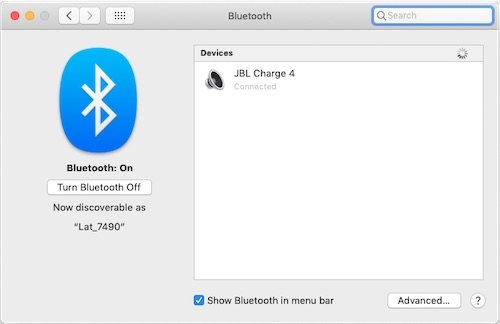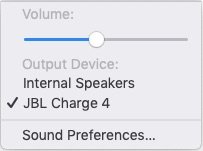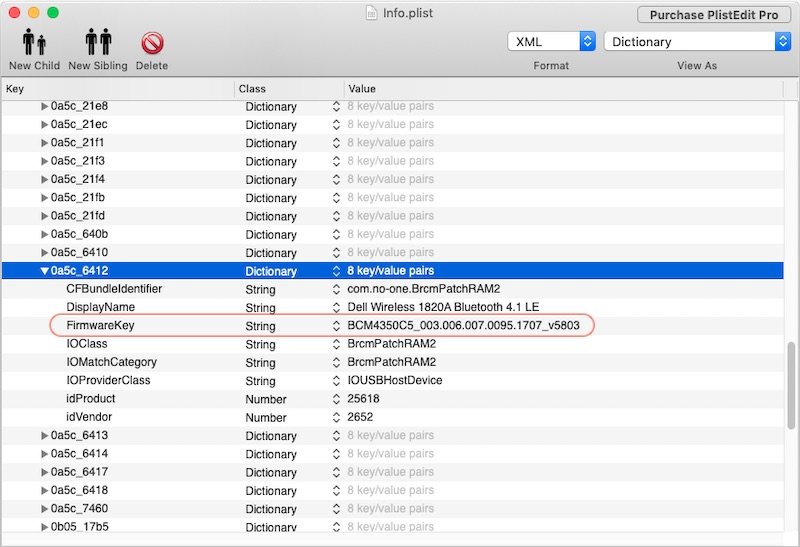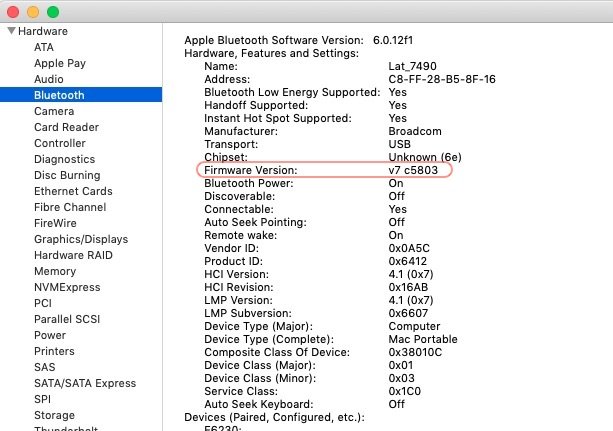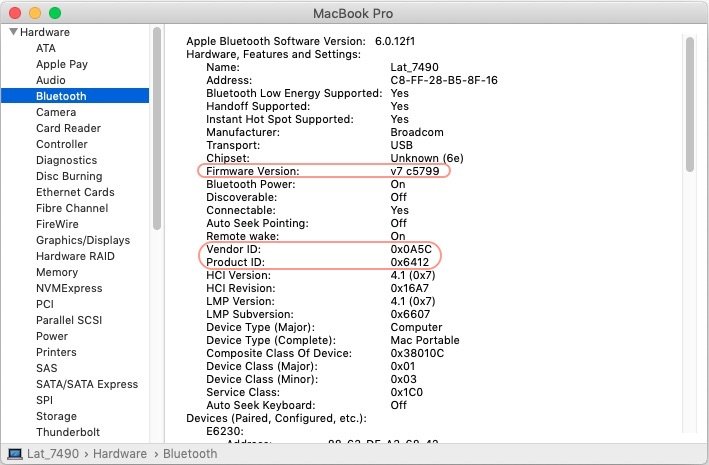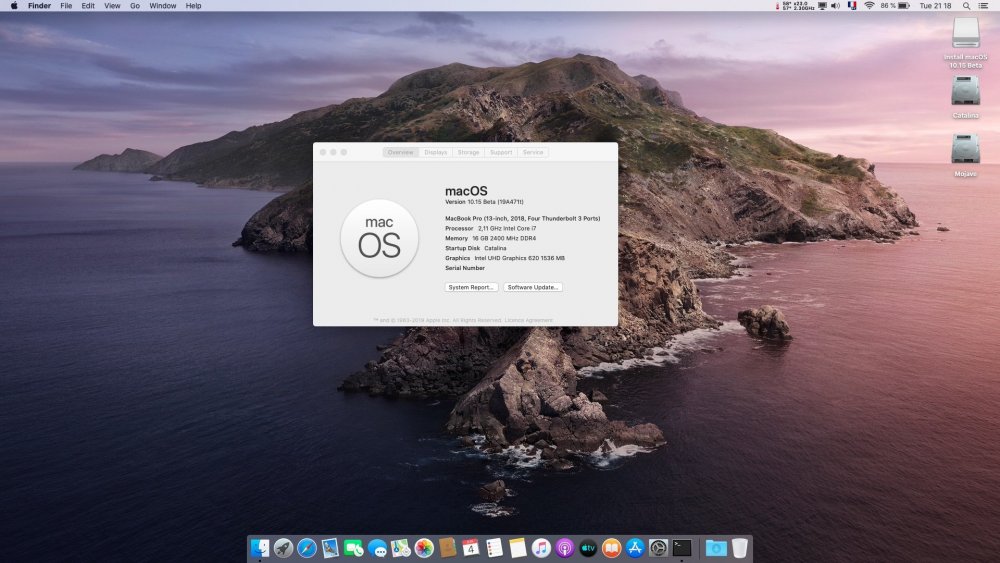-
Posts
10067 -
Joined
-
Last visited
-
Days Won
569
Content Type
Profiles
Articles, News and Tips
Forums
Everything posted by Hervé
-
I found version 4688, dated July 2018 which seems to work Ok too. BCM4350C5_003.006.007.0221.4688.hex.zip In BrcmPatchRAM2 kext, the FirmwareKey for device 0a5c_6412 in Info.plist file must be updated to "BCM4350C5_003.006.007.0221.4688" Edit: reverted to uncompressed .hex firmware file.
-
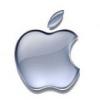
Dell Latitude 5490 - cant install Mojave - efinhelper Connection Closed
Hervé replied to DarkArrayLord's topic in The Archive
You could have followed this guide too, it may be more appropriate than the 7480. -
Yes, it's been known for years and quite frequently/widely mentioned here and at other forums too. https://osxlatitude.com/forums/topic/3181-carbon-copy-cloner-and-chameleon-boot-loader/?tab=comments#comment-24428 https://osxlatitude.com/forums/topic/907-usb-configuration-seagate-hybrid-install/?do=findComment&comment=6248 https://osxlatitude.com/forums/topic/2836-how-to-dell-inspiron17-3721-fully-working/?do=findComment&comment=30498
-
Simple obvious logic... create 2 x config files, each with a different name and select/call on one or the other from Clover's main menu as required. Eg: Config_Moj.plist and Config_Cat.plist if you want or need to inject different kexts for the different macOS versions, place those kexts in the relevant 10.xx folders. As simple as that...
-

Final Dell Precision M6800 & M4800 Fully Working High Sierra or Mojave
Hervé replied to Franckenstien's topic in Dell
In case the above Google link becomes unavailable... Dell_Precision-M6800_Jul2019.zip -
Ok, I downloaded the latest driver for DW1820A I could find on Dell's web site here (Win7 64bit for XPS 9350, dated May 2019). I extracted the firmware 1707 for our 0A5C:6412 DW1820A device: BCM4350C5_003.006.007.0095.1707_v5803.hex.zip All you need to do then is: copy the uncompressed .hex firmware file to the Resources folder of BrcmFirmwareRepo kext to supersede current version 1703 (=v7 c5799) update the key for device 0a5c_6412 in Info.plist file of BrcmPatchRAM2 kext After repairing permissions and rebuilding the cache, I can now connect to my JBL USB speaker without issues: This firmware version 1707 (which equates to v7 c5803) seems to be quite old (dated December 2015) but works Ok nevertheless. I'll try and lookup for a more recent firmware than that one. Edit: reverted to uncompressed .hex firmware file.
-
Funny that you copied all your add-on kexts to /L/E, except FakeSMC. Depending on your Clover settings, you could be trying to inject kexts that are already cached. So, copy FakeSMC to /L/E, repair permissions, rebuild your cache and set Clover kext injection to "Detect". Reboot and check Bluetooth again. This being said, your setup is probably Ok: your Bluetooth SysInfo, things look identical to the info for my own card. On my side AirDrop works perfectly with my other Hacks and so does HandOff with my iPhone. I had not even attempted to pair with any other Bluetooth device but on trying to connect to my JBL speaker, I too cannot establish a connection. I guess more work is required on that front. In all likelihood, Rehabman's kext need an update of firmware in which case you could try to extract the latest one as explained here. Device 0a5c:6412 is not mentioned in the list of tested devices but, nevertheless, it appears to be covered by a 4yr+ old firmware (BCM4350C5_003.006.007.0095.1703_v5799)... Looking at the contents of BrcmFirmwareRepo, you'll see a list of firmware and that's where the latest version for the DW1820A should go. I'll try to update asap.
-

[SOLVED] Dell Latitude 5580 - Mojave 10.14.5 (Touchpad issues)
Hervé replied to form's topic in The Archive
Looking at Dell's documentation, the Latitude 5580 shows fitted with an Alps TouchPad. The driver page says it's compatible with other model such as the Latitude E6x30 or E6x40 so give Dr Hurt's kexts a try. Initially, I would have been tempted to say this laptop was likely fitted with an I2C TouchPad in which case I would have suggested you try the latest I2C PS2 kexts. The mouse pointer is unlikely to be supported by the I2C kexts. https://github.com/alexandred/VoodooI2C https://github.com/alexandred/VoodooI2C/releases Intel wireless cards are not supported (you appear to know that already), so you have to replace it by a supported model or, as you currently do, use a USB dongle. We have inventories of supported/unsupported cards available in our R&D section. -
You could look at the info posted in the other topics in our Keyboard section that relate to the same issue.
-
Bluetooth has nothing to do with wireless. You've got to make sure you've got all your USB ports working through an injector or otherwise and then use Rehabman's firmware patching kexts as detailed in my 7490 guide.
-
It can be a sign of a dying battery. Does your battery LED blink in red or shows fixed in red when indicator is at 0%?
- 1 reply
-
- battery issue
- calibration
-
(and 1 more)
Tagged with:
-
Questions still arise about this matter so here's a recap of what caching kexts and injecting kexts (through Clover) mean: 1/ Caching kexts: Kexts placed in /L/E and/or /S/L/E are cached in the kernel cache (or prelinked kernel) which aims to accelerate boot time. This is the natural and expected mode of operation of the OS. Cached kexts are subject to signature by Apple and must be set with the correct permissions (Cf. our FAQ topics on permissions). Cached kexts will be shown/listed/registered in System Info (ex-SysProfiler) -> Software -> Extensions. Caching kexts is the recommended scheme for all add-on kexts. /S/L/E is the location for Apple's own (i.e. vanilla) kexts. Ideally, this should be left untouched by Hackintoshers unless for very specific and rare reasons (eg: patched AppleHDA). /L/E is the location for 3rd party/add-on kexts. This is where all kexts we use for our Hackintoshes should go. Add-on kexts should only be placed in either folder, never in both. 2/ Injecting kexts through Clover: Injected kexts are not cached and will not be shown/listed/registered in System Info (ex-SysProfiler) -> Software -> Extensions. Injecting kexts results in a slightly slower boot than caching kexts (though many would arguably say it's hardly noticeable). Kexts injection operates according to Clover settings on the matter: If kext injection is set to Yes, kexts placed in E/C/k/O (or E/C/k/10.xx) will be injected. If kext injection is set to No, no injection takes place; obviously... If kext injection is set to Detect, kext injection operates according to the presence of FakeSMC in the kext cache (the kext having been properly installed in /L/E or /S/L/E). If present, no injection takes place, if absent, kext injection is performed. If kext injection is used, make sure the kexts aren't cached at the same time. Clover's E/C/k/O and E/C/k/10.xx are the locations for kexts that Clover injects at boot time: E/C/k/O is used to inject kexts regardless of the OS X/macOS version. E/C/k/10.xx are used to inject kexts for the given OS X/macOS version and therefore allow different kexts to be injected for different versions. Apart from the obvious requirement for fresh OS X/macOS installations (and/or updates), kext injection is very useful for recovery purposes (like booting without cache which ignores /L/E) or when testing kexts for instance; if a newly injected kexts causes issues (like a KP), it's very easy to remove/bypass it. On the other hand, kext injection is known to occasionally cause problem because it's not the natural way in which kexts should be loaded. Kext injection is basically a form of forced loading and, sometimes (though rare these days), it does not work. This is why -as stated on numerous occasions by Rehabman himself- Clover should really be set with kext injection in "Detect" mode and contain only the absolutely essential/minimum set of kexts required to boot the system. My own recommendation is to experiment with kexts through injection and, once kexts are validated, to cache them from /L/E. Google for this kext injection matter or consult the Clover wiki/InsanelyMac forum. It's all quite widely documented.
- 1 reply
-
- 2
-

-
Plenty of threads/posts on the forum that explain the difference between caching kexts from /L/E (which really is the recommended way) vs. injecting from E/C/k/O (which can be unreliable). I've also added a dedicated thread on the matter in the FAQ section, which you should consult.
-
System Preferences -> Energy Saver! It's not enabled by default... Ever thought of using the built-in Help??? Plenty of books if you need to learn how to use OS X:macOS...
-
They're not "broken"; they're not currently supported by the I2C drivers we use.
-

Dell E7240 Trackpad OSX mojave not work can help me every one
Hervé replied to TMVX's topic in The Archive
Wy don't you use the pack available on our forum for this model (and a vanilla installation rather than that Niresh distro)? E7240 will be ALC292 audio codec, so Lilu + AppleALC (layout 12) + CodecCommander. -

Help installing mojave on Acer Predator helios 300 pleaseeee
Hervé replied to toussaintjames's topic in The Archive
@Augusto Sandim,- 30 replies
-
- 1
-

-
You can Google for "Broadwell DVMT patch". But I believe JakeLo already gave you what you needed.
-
Seems r4934 could be buggy... Try the latest Clover version: https://github.com/Dids/clover-builder/releases
-
Maybe you can explain what pins you masked and why.
-

Help installing mojave on Acer Predator helios 300 pleaseeee
Hervé replied to toussaintjames's topic in The Archive
I guess we're not allowed to know what that built-in wifi is...- 30 replies
-

Help installing mojave on Acer Predator helios 300 pleaseeee
Hervé replied to toussaintjames's topic in The Archive
What built-in wifi ?- 30 replies
-
DP1 Installed Ok on my Latitude 7490 with: Clover r4940 New Lilu v1.3.7 + updated WEG & AppleALC plugins. Rest is same as for Mojave All hardware & main features working. Several bugs and gremlins of course, DP1 oblige...
-
It's been quite clearly stated in our BCM9350 guide that this model does not work reliably. Consider it unsupported and change it.
-
@muttonhead411, there is no specific kext other than optional AirportBrcmFixup. The rest is totally vanilla, that's the idea... To date, there's nothing else known to get those cards to work. It'd be fair to say that we need @Naidis to confirm if the card keeps working after over 1hr or not with AirportBrcmFixup kext + brcmfix-driver=1 boot option. @Naidis, no such thing as this "Auto Unlock" option/feature listed for my DW1820a CN-0VW3T3.



